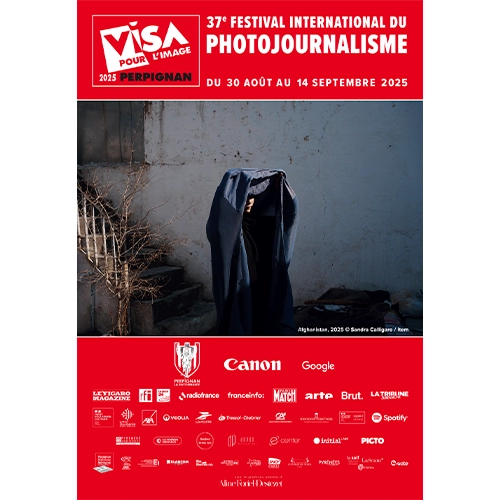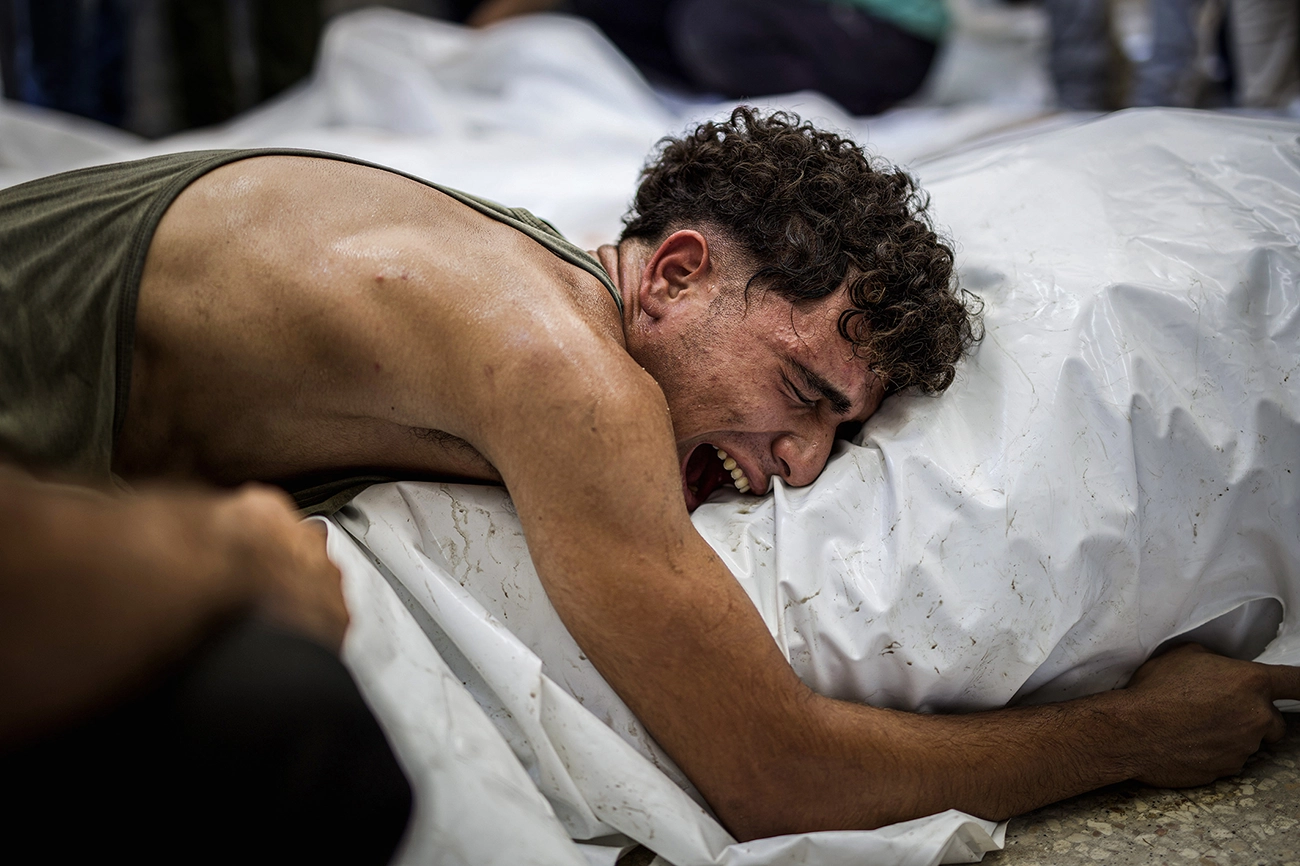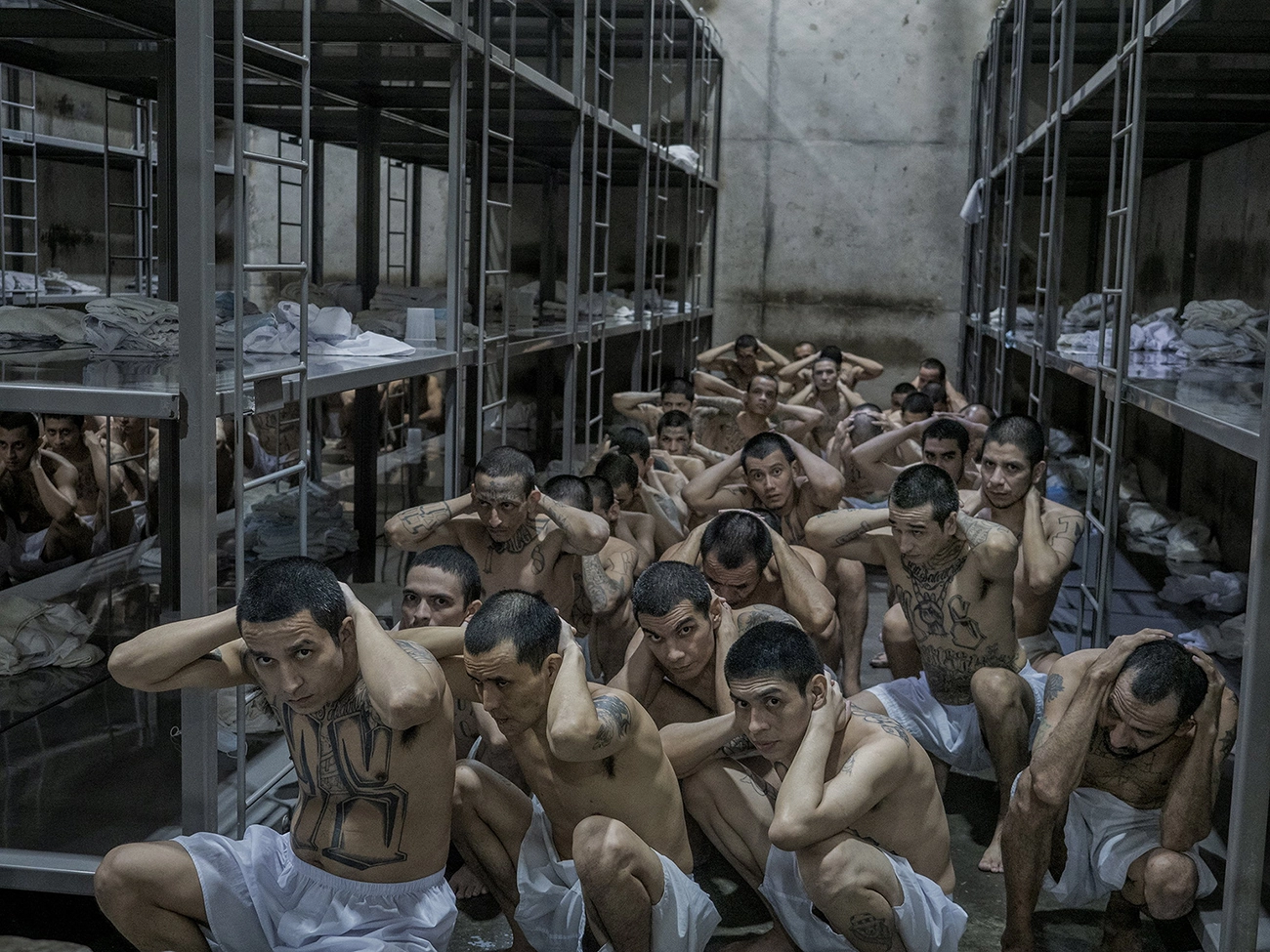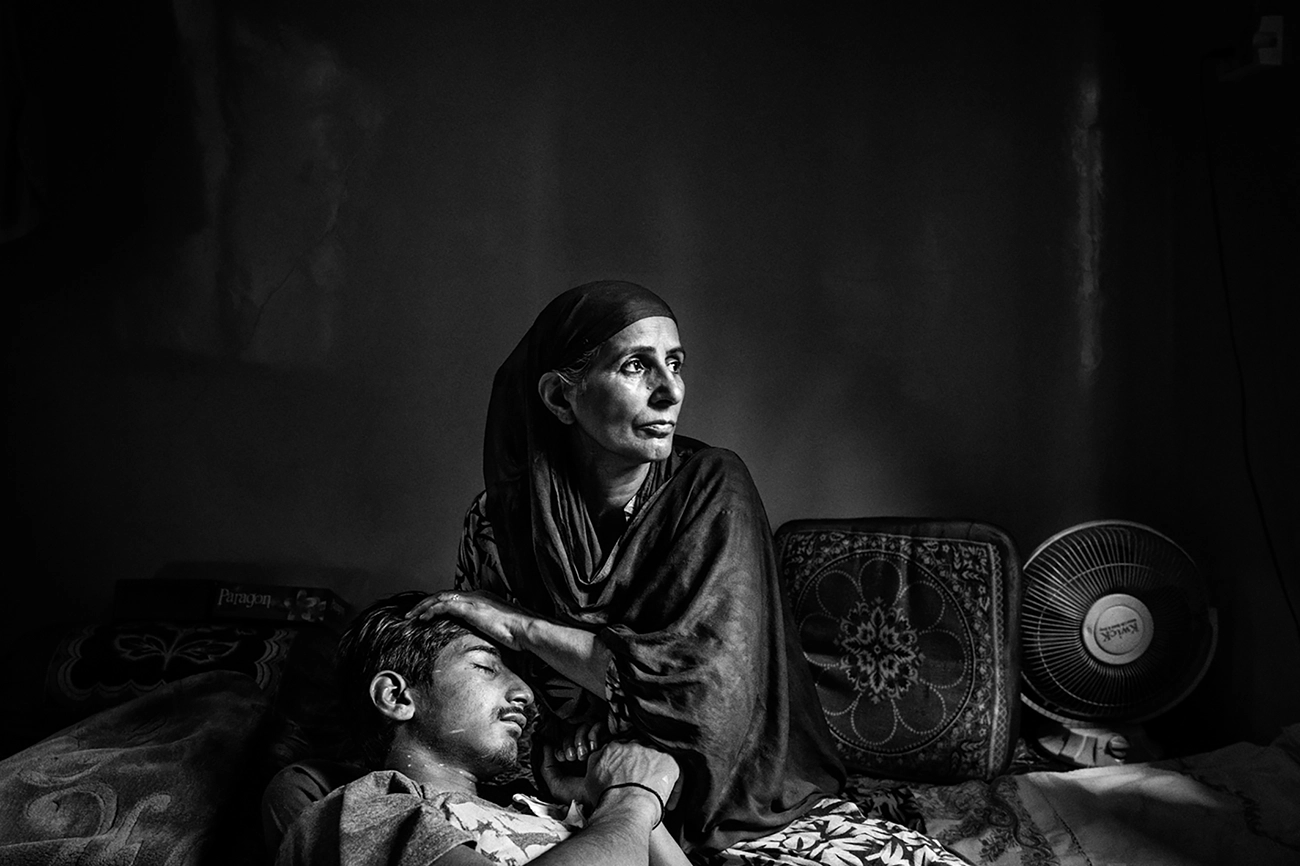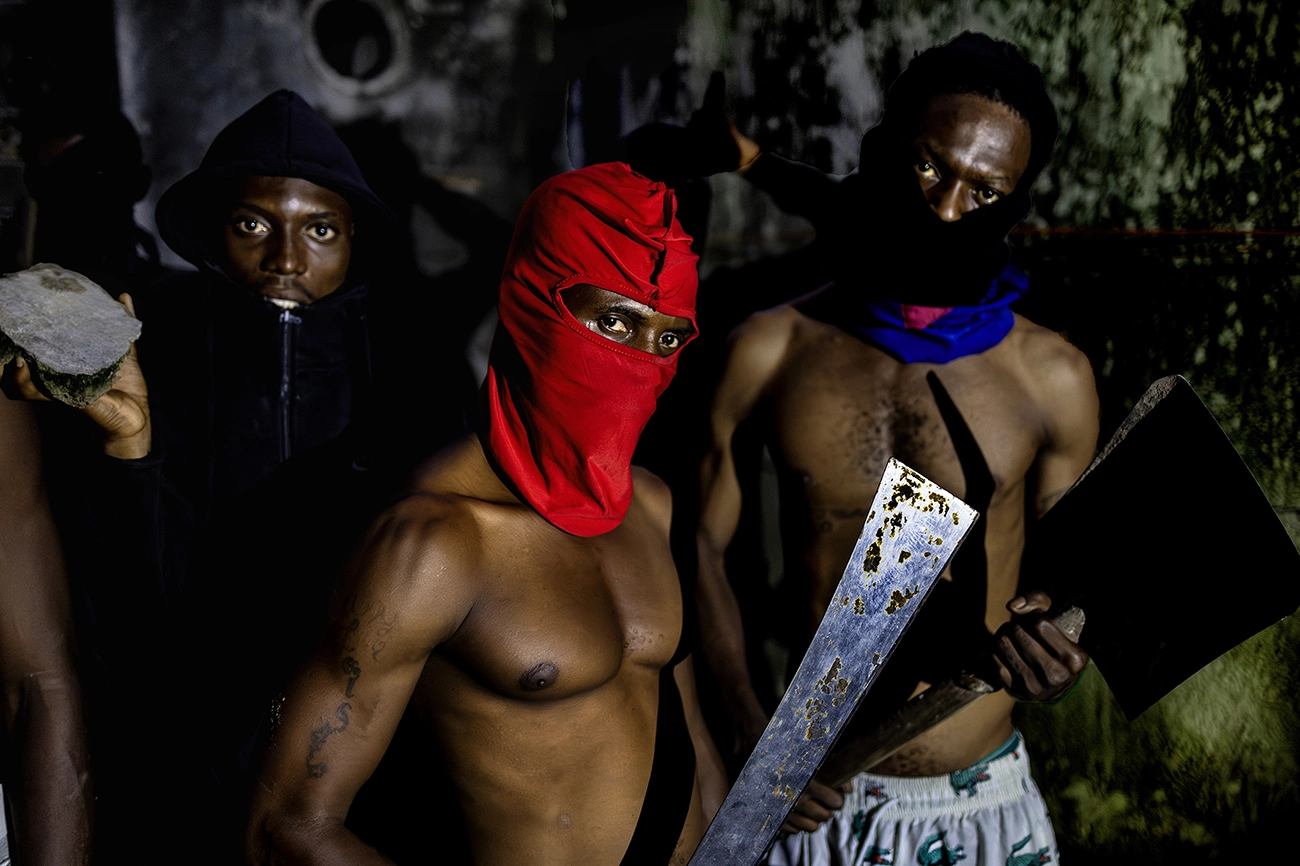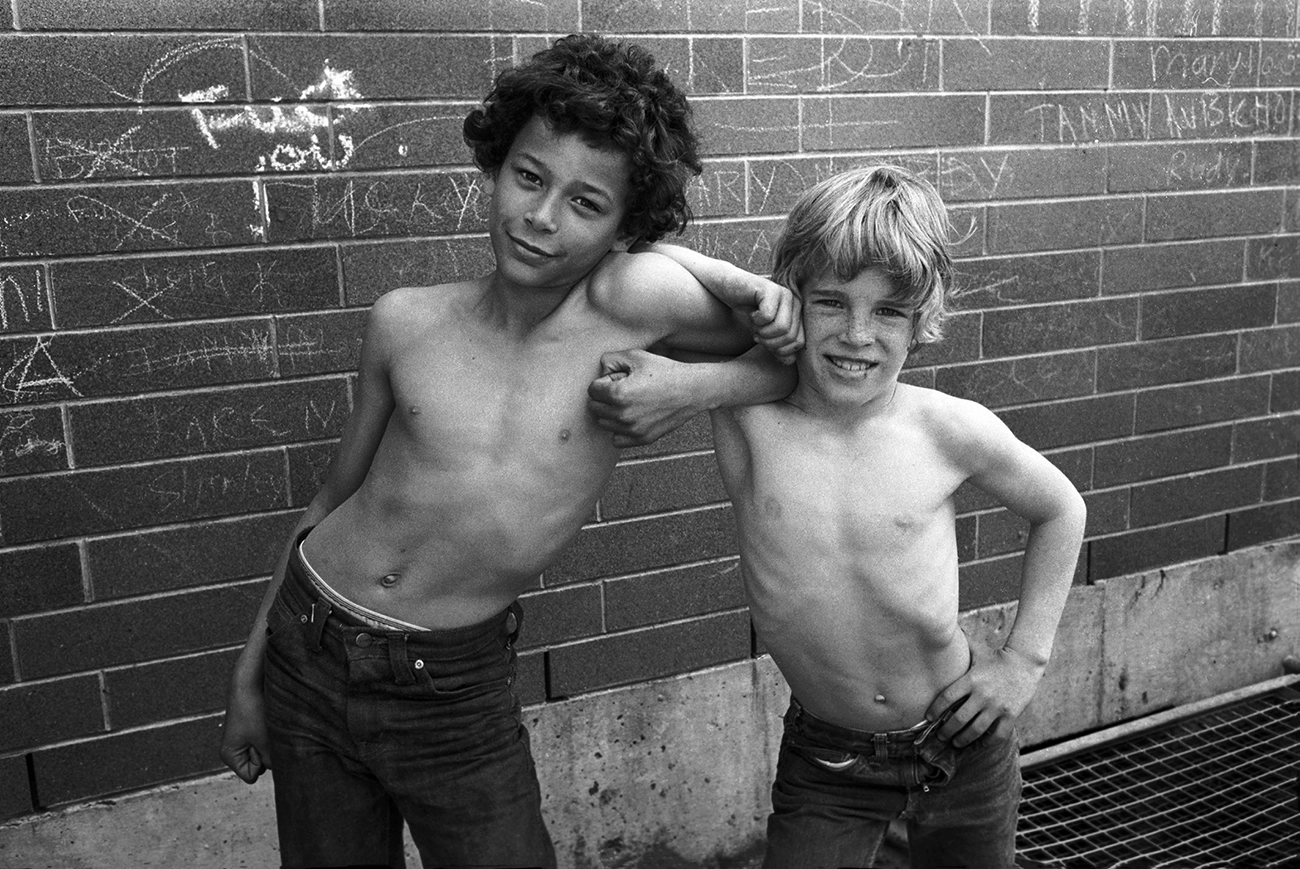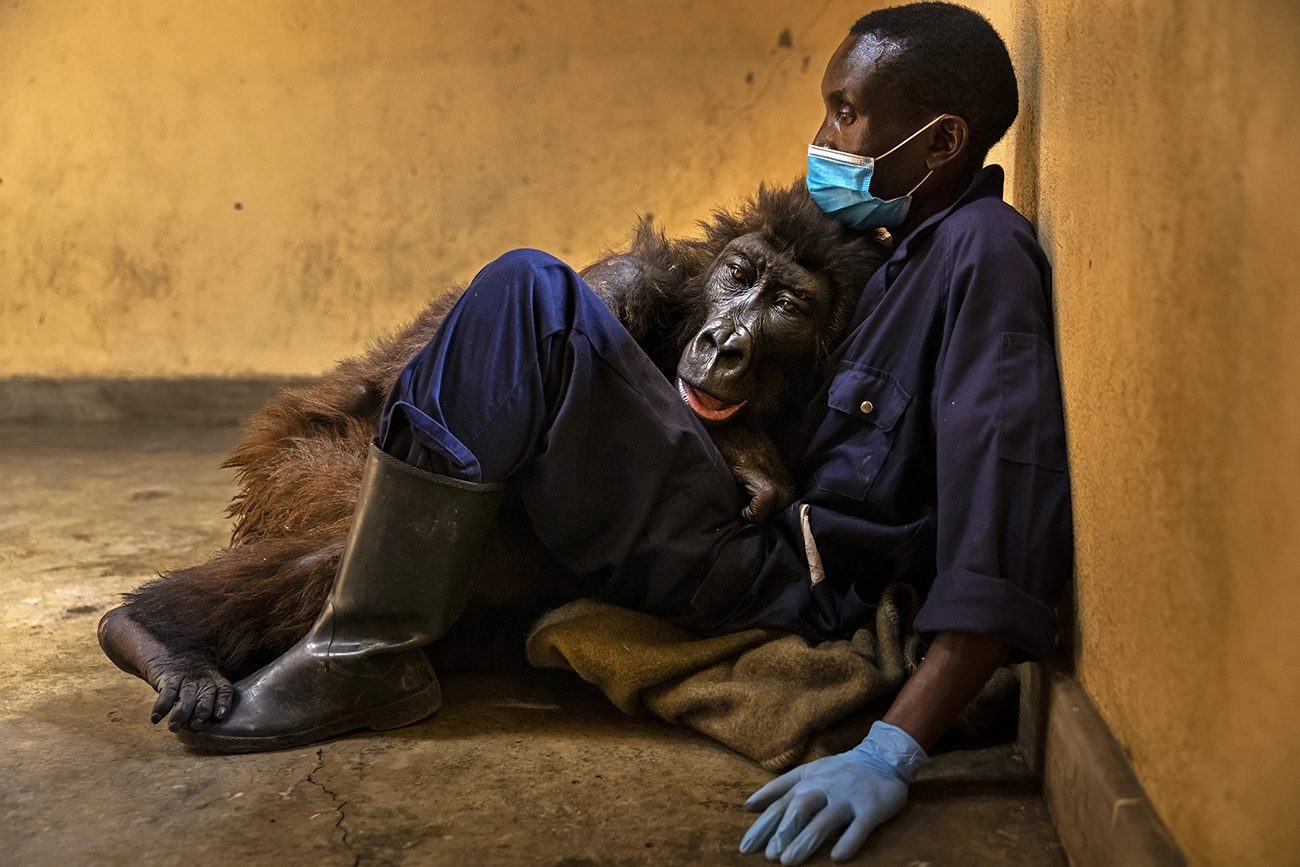«How many times can a man turn his head,
pretending he just doesn’t see?»
(Bob Dylan, Blowin’ in the Wind)
Once again, the exhibitions and screenings selected by Jean-François Leroy and
his team urge us not to turn our heads away. Innocent people are increasingly at
the mercy of a world that is going mad. What is more, this terrifying reality is being
manipulated and saturated with fake news fueled by uncontrolled AI.
Visa pour l’Image is a visa against indifference. It is a visa for critical thinking.
This is why our - sorry, your - Festival is such a powerful and personal experience.
By showcasing the incredible work of photojournalists, who sometimes risk their
lives in the field, Visa pour l’Image also reminds us that fewer than one in five
countries has a free press. We are privileged and we must resist.
Paradoxically, the exhibitions are often breathtakingly beautiful. It is always
journalism, but it is often also Art. What is important is how effective they are
in communicating the truth. And in communicating hope: many of the photos
convey warmth, tenderness or harmony. There is light at the end of the tunnel.
New this year, two excellent “guest” exhibitions in keeping with the spirit of the
festival will be shown at the Palais de la Chambre de Commerce. And, for the first
time, the screening soundtracks will be available on Spotify. From vision to sound.
Fighting indifference is a noble cause. That is why our festival is free. Thank you
to all our partners, the public institutions, the media outlets and our individual and
corporate sponsors for allowing us this luxury. It is our trademark. There are more
and more of you every year. Your presence means a great deal to the 200 people
who are proud to work for the festival and, above all, it means a great deal to the
photojournalists. Please tell your friends and families about your experience at
Visa pour l’Image – Perpignan. We hope that your walk around the town is full of
meaning and emotion.
Pierre Conte
President of the Association Visa pour l’Image - Perpignan
Editorial
With the world in an even worse state than usual, Visa pour l’Image is
more necessary today than it has ever been. Even more than 37 years
ago, when we launched this project that nobody believed in.
For a long time, the main criticism of the festival was that it was too
gloomy, too violent, too pessimistic. Unfortunately, we were just a little
too ahead of our time. The world is in a bad way, but now everyone is
saying so. Everywhere. All the time. Journalism is on the front line of all
this bad news around the planet. Some are tempted to be alarmist, to
exploit tragedy, spread rumors and incite panic. Not us.
During the evening screenings at Campo Santo and in the exhibitions,
we will continue doing what we have always done: showcasing the best
in photojournalism. Nuanced and verified information from the field, not
from social media; images made by humans, not by generative AI.
After almost forty years of precious collaboration with the city of Perpignan
and our other faithful partners, along with my team led by Delphine Lelu,
we are more determined than ever to ensure that the festival, and the
wonderful work of the photographers, can continue to exist, evolve and
reach more and more people. I look forward to announcing new projects
in the coming months and years.
Jean-François Leroy
© Saher Alghorra, Zuma Press
A man embraces the body of a loved one wrapped in a white shroud at the morgue of Al-Aqsa Martyrs Hospital. A number of injured and dead were brought to the hospital after bombings. Deir al-Balah, August 13, 2024. © Saher Alghorra / Zuma Press Winner of the 2025 Humanitarian Visa d’or Award - International Committee of the Red Cross (ICRC)
Winner of the 2025 Humanitarian Visa d’or Award - International Committee of the Red Cross (ICRC)
Saher Alghorra has documented the daily lives of those who have been trapped in a conflict
of unprecedented violence since October 2023. Over a period of more than 17 months, he
spent time with families and captured scenes of survival, pain and resilience.
Anush Babajanyan: After the Aral Sea
This project documents the dramatic transformation of the Aral Sea Basin and the resilience of
the communities who continue to call it home. While much of the sea has vanished, pockets
of water remain, sustaining life and hope. This visual journey highlights aspects of life in the
region today, such as reforestation programs, fishing, sustainable farming, and the everyday
courage of people shaping a new future on the former seabed.
Cynthia Boll: Reshaping home: Indonesia’s capital migration
Winner of the 2024 Canon Female Photojournalist Grant
This report documents the relocation of Indonesia’s capital from Jakarta to Ibu Kota Nusantara
in East Kalimantan. It addresses the environmental crisis in Jakarta, the development of a
new smart city on Borneo, and the political and social implications of this unprecedented
move. The project examines the shift from an overpopulated, sinking metropolis to a planned,
sustainable capital.
Alfredo Bosco, Ronin: The Iraqi captagon and synthetic drug crisis
Winner of the 2025 Ville de Perpignan Rémi Ochlik Visa d’or Award
In recent years, there has been a noticeable increase in drug trafficking within and through
Iraq. The two main drugs involved are captagon, which is produced in Syria, and crystal meth,
which, according to the Iraqi authorities, comes from laboratories in Iran. These drugs are
predominantly distributed and sold in the poor areas of cities and in the southern regions of
the country. The Iraqi authorities have implemented strict measures to curb their proliferation.
With support from Le Figaro Magazine
Sandra Calligaro, Item: Afghanistan: In the Shadow of the White Flags
Recipient of a 2024 Françoise Demulder Grant
For four years, the Taliban have been back in power in Afghanistan. After twenty years of
democracy and relative openness to the world, this is a real step backwards for the urban
population. Women are kept indoors, deprived of secondary education and excluded from
most places of work and socialization. Between resignation and resistance, hope and despair,
they try to wrest a few moments of freedom, defying Taliban law.
With support for documentary photography from the Centre national des arts plastiques,
and support from LaScam’s “Brouillon d’un rêve” and from “La Culture avec la Copie Privée”.
Gang members prepare to leave their cell before it is searched by prison guards at the Terrorism Confinement Center (CECOT), where there are between 15,000 and 20,000 inmates. © Juan Carlos
Never in recent Latin American history has a government locked up such a large proportion of
its population: almost 2% of all Salvadoran adults are currently behind bars as a result of the
war on gangs. For more than two years, President Nayib Bukele has managed to establish
a climate of relative peace in a country that had long been plagued by violence. This peace
is welcomed by a majority of Salvadorans despite the fact that it is based on authoritarian
methods: arbitrary detention and the absence of trials, allegations of torture and suspicious
deaths. Juan Carlos’ photographs depict everyday life in a country where peace has been
bought at the cost of freedom.
Jean-Louis Courtinat: 40 years of social photography
This exhibition looks at the many different facets of forty years of social photography.
With humility, Jean-Louis Courtinat has continually recorded the “tiny lives” of unimportant
people – those who are rejected by society – those who are erased by death. Through this
moving gallery of portraits, he shows us how remarkable the “most fragile” people are, and
how much they have to teach us. These photographs raise profoundly human and relevant
questions for our affluent societies.
Julia Demaree Nikhinson, AP: A Nation Decides
This exhibition documents the 2024 U.S. presidential election between Donald Trump and
Kamala Harris. With images from key battleground states, it provides an intimate view of a
divided nation and a democracy under pressure. It explores how Americans experienced
one of the most contentious and globally significant elections in modern history, covering
campaign rallies, election night and the presidential inauguration.
Josh Edelson, AFP: California: A Decade in the Middle of the Inferno
Since 2015, Josh Edelson has been documenting California’s wildfires for AFP. From Paradise
to Los Angeles, his images capture a state in crisis, ravaged by fires that come earlier, burn
more intensely, and spread faster each year. His work looks lucidly and compassionately at
a decade of climate emergency.
Deanne Fitzmaurice: Lionheart: The Story of Saleh
This project documents the life of Saleh Khalaf. During the US-led invasion of Iraq in 2003, when
he was 9 years old, Saleh lost both his hands and an eye, and was seriously wounded in the
abdomen when he picked up a bomb that exploded. He earned the nickname “Lionheart” after
his heart stopped seven times on the operating table as he refused to die. Over the past 20 years,
Deanne Fitzmaurice has documented his journey, from a young boy brought to the United States
for life-saving medical treatment, to a man navigating the complexities of life as a maimed refugee
in America. What began as a story about Saleh’s personal struggle has evolved into a broader
narrative about the brutal effects of war on civilians.
Salwan Georges, The Washington Post: The Fall of Assad
The fall of Bashar al-Assad’s regime in December 2024 marked a historic turning point, bringing
an end to over half a century of Assad family rule. Salwan Georges traveled to Syria in 2024 and
2025, chronicling the early days of a changed country, the devastation left in Assad’s wake, but
also the resilience of the Syrian people as they face an uncertain future.
On March 28, 2017, when he was 16, Farzan Sheikh was shot in the left eye by an Indian policeman with a pellet gun in his neighborhood in Srinagar, in Indian-administered Kashmir. Farzan was an unwitting victim again in August of the same year, when pellets blinded his right eye. © Cédric Gerbehaye
Since the partition of the Indian subcontinent, which was hastily decided in 1947, Kashmir
has become one of the most militarized regions in the world, and the scene of numerous wars
between India and Pakistan. Between 2017 and 2024, Cédric Gerbehaye documented both
sides of the Line of Control, a border which is not internationally recognized, in the heart of a
mountainous region characterized by geopolitical complexity and cultural diversity.
Gaëlle Girbes: Ukraine, surviving amidst the ruins
Winner of the 2024 Pierre & Alexandra Boulat Award
Since Russia invaded Ukraine on February 24, 2022, many villages and towns have been
wiped from the map. According to a February 2025 report by the World Bank, the Ukrainian
government, the European Commission and the United Nations, almost 30% of the Ukrainian
territory is severely damaged and mined. Ukraine’s Ministry for Development of Communities
and Territories has recorded 4.6 million people who have lost their homes. With the war still
raging, some Ukrainian citizens, who have nowhere else to go, are trying to survive amidst the
ruins, and some are even using them to rebuild their homes.
Adam Gray: American Madness
Since the storming of the Capitol on January 6, 2021, Adam Gray has been documenting the
madness that appears to have taken hold of the United States. In Washington, New York, and
on the border with Mexico, he has worked for several American and European media outlets
to relate what is going on day-to-day in this country where different movements have been in
conflict since Donald Trump’s second term began.
His photographs reveal the fractures that are currently tearing the United States apart:
between blind faith and complete disillusionment; overt nationalism and progressive struggles;
shattered dreams and rising anger.
Fatma Hassona: The eye of Gaza
This exhibition presents a selection of photos taken in Gaza by the photojournalist,
Fatma Hassona, during the spring and summer of 2024. She had shared these photos
with the filmmaker Sepideh Farsi who was making a documentary about the lives of
Gazans as seen through Hassona’s eyes. Fatma Hassona never saw the results of this
project. She was killed in a targeted attack in April 2025.
#paradise: Curator: Samuel Bollendorff
#paradise is an archive of people’s reactions to the climate crisis. Using screenshots taken
from social media such as Facebook, Instagram, X, TikTok and Truth Social, this series
reveals how individuals experienced disasters through the images they shared. Images of
tragedy, shock, denial, individualistic blindness, inappropriate selfies, conspiracy theories
and religious fervor. In a word, Humanity
Jean-Pierre Laffont: Photographer Unchained
Though he began his career during the Algerian War, it was in the United States that Jean-Pierre Laffont
established himself as a major photojournalist. His work covered the pivotal years of the ‘60s, ‘70s
and ‘80s, and the important figures who made their mark on history and the arts. He also captured
the extraordinary changes that took place at the turn of the millennium. This retrospective of the most
American of French reporters also highlights other projects, such as his work on child slaves, and looks
back at a career that will stand out in the history of photojournalism.
Paloma Laudet, item: DRC: living under M23
For almost thirty years, eastern DRC has been ravaged by conflict. This conflict began to
intensify in 2021, and on January 27, 2025, the M23 armed group took control of Goma, the
capital of North Kivu province, with a population of two million people. Having suffered the
devastating consequences of this war for generations, the one hope of the region’s civilian
population is that there will be lasting peace.
Kulunas are ultra-violent gangs who terrorize the city, and are known to have hired out their services to politicians. The gang members, who are aged between 17 and 30 years old, are organized into cartels that fight each other to control territories. Kinshasa, Democratic Republic of Congo, May 26, 2025. © Pascal Maitre
It is one of the greatest challenges that humanity will have to overcome in the years ahead.
According to the United Nations, by 2050, two out of every three humans will live in an urban
area. Twice the current number, or an additional 2.5 billion people. Urbanization is growing at
an unprecedented rate, particularly in the cities of the Global South. In Africa, the population
is due to increase by 91% in 25 years, reaching 2.6 billion by 2050. In Asia and South
America it will rise from 2 billion to 4 billion. This exhibition looks at the issues raised by this
exponential growth in three megacities.
Eugene Richards: Do I Know You?
Do I Know You? is an exhibition of color photographs of contemporary America by Eugene Richards.
It covers themes such as survival, the shadows cast by slavery, crime, imprisonment, poverty,
incomprehensible loss, the longing for love, and what it means to be beautiful.
Rijasolo, Riva Press for Géo France: Madagascar,
Land of Spirits
In Madagascar, spirituality shapes people’s relationship with their environment and their
ancestors. Possession rituals, spirit worship and the veneration of nature mean that there is
daily interaction between the visible and invisible worlds. Despite external influences and
the rapid changes from the modern world, traditional beliefs are still very much alive, forming
a powerful connection between the past and the present. Although this ancestral heritage
is sometimes fragile, it remains at the heart of Malagasy identity, reflected in the island’s
practices, prayers and sacred places.
This exhibition received technical support from the Yavarhoussen Fund.
1974 - Vancouver, British Columbia, Canada: Two boys stand in front of a graffiti wall. © Stephen Shames
Stephen Shames has been a photographer for more than five decades. He has traveled
across five continents, witnessing tragedy and triumph. Although he has photographed a
wide range of subjects, including presidents and people from many different cultures, there is
a common thread running through his images. His photos of children and families focus on
what tears us apart and what binds us together: violence and abuse, but also sensuality, love,
hope and transcendence. The images come from his heart and soul.
George Steinmetz: Feed the Planet
Where does the food we eat come from? To answer this question, George Steinmetz has
produced one of the most ambitious photojournalism projects of the early 21st century. Using
drones and a glider, he has taken to the sky in over 50 countries, and has used this perspective
to show the impact of food production.
Visa pour l’Image already exhibited the first chapters of this important project, which is both a
documentary record and a work of art, in 2018 and 2022. This final Feed the Planet exhibition
coincides with the publication of the book of the same name.
Brent Stirton, Getty Images: Virunga National Park.
Democratic Republic of the Congo:
100 years of Resilience
2025 should have been a year of celebration for Virunga National Park, the oldest on the
African continent. Thanks to the dedication of the rangers who protect it, the park’s gorilla
population has been preserved and the largest herd of elephants recorded in the last 50 years
has returned. But because it borders an area that has been at war for three decades, the park
is permanently under siege from those who covet its natural resources: terrorist groups, local
militias and rebels backed by neighboring Rwanda. For 15 years, Brent Stirton has been a
witness to this war that does not speak its name. For the park’s 100th anniversary, he will be
showing all of his work from this period.
© Brent Stirton, Getty Images
The fear of dying in Ndakasi’s eyes, here with her carer André Bauma from the Senkwekwe Centre, the only refuge in the world for mountain gorillas. Ndakasi survived when the rest of her family was killed in 2007. She spent the rest of her life in the company of humans and other orphaned gorillas. (2021) © Brent Stirton / Getty Images
Ten years after the fall of its caliphate in the Middle East, Islamic State has discretely rebuilt
its forces in an arid, rugged region of northern Somalia. A remarkable Washington Post
investigation revealed the scale of the conflict in the remote provinces of one of the world’s
poorest countries. As a photojournalist for the newspaper, Carolyn Van Houten was able to
follow the Somali army as they hunted Islamic combatants all the way to the caves that were
recently discovered in Puntland.
